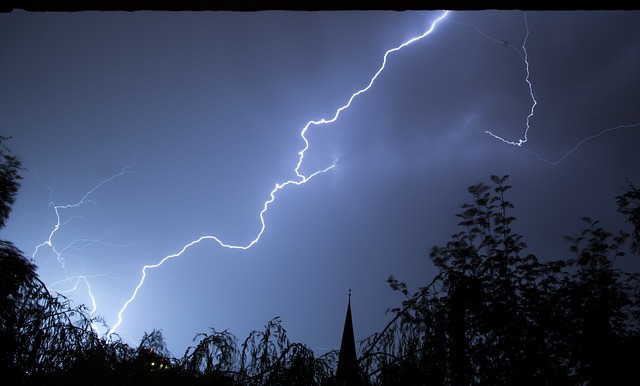Electrical storms begin with the water cycle. When water on the surface evaporates, and rises into the atmosphere, it condenses into the clouds we see. However, collisions between the water molecules can and do strip electrons from the molecules, charging the cloud. The positive ions gather at the top of the clouds, and the electrons gather at the bottom. It's important to note that although electrons are being stripped away from the molecules, this does not create a plasma. Recall that a plasma is a jumbled mess of electrons and the positively charged nucleus of an atom. The repulsion from the free electrons in the clouds is strong enough to push the electrons in the surface of the Earth, thus making the surface of the Earth positively charged. The only thing that's missing is a pathway for the charged particles to go through. That is where things get interesting. When the charge is large enough, upwards of 10,000 and more volts, it forces the air to ionize and creates a conductive plasma out of the atmosphere. The free electrons at the base of the cloud are now free to travel through the atmosphere and strike at will.
Hopefully harmlessly on a lightning rod.
